Submitted by Anju George
Toronto turned "Sports City" overnight: How the people of this city became "one"
Canada Architecture News - Jul 01, 2019 - 17:18 11817 views
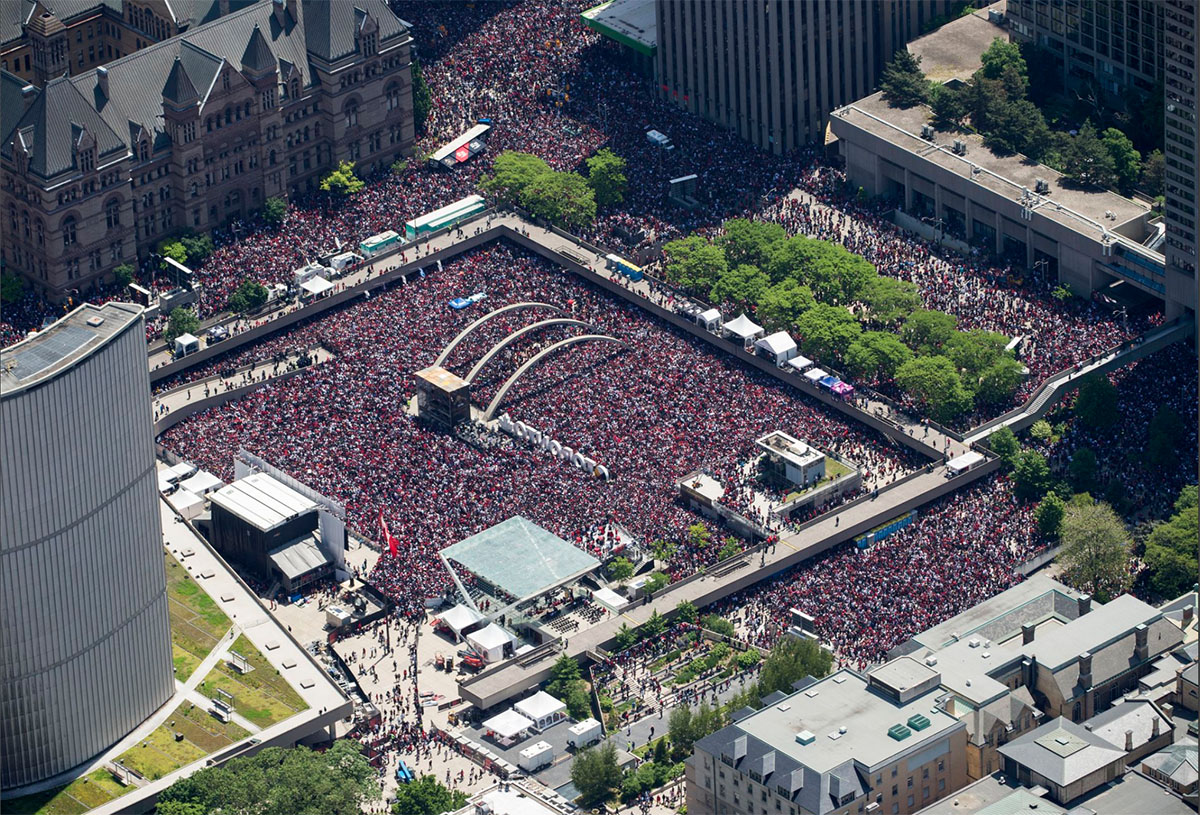
Sports is replete with remarkable journeys of players who have made it big in the sport and of those who have fought the odds and showed their mettle under pressure. Canadian sports is no different. The love and passion Canadians have for sports was clearly reflected in the recent NBA Championships.
When it came to their home team, they were willing to do just about anything to see that their team took home the title. Canadians even took days off work to witness the Raptors' homecoming. According to a Statistics Canada study conducted in 2008, more than two million Canadians attend sporting events while on holiday, making sports tourism the fastest growing segment of the tourism industry1. If this is not pure love for the sport, then I really don’t know what is.
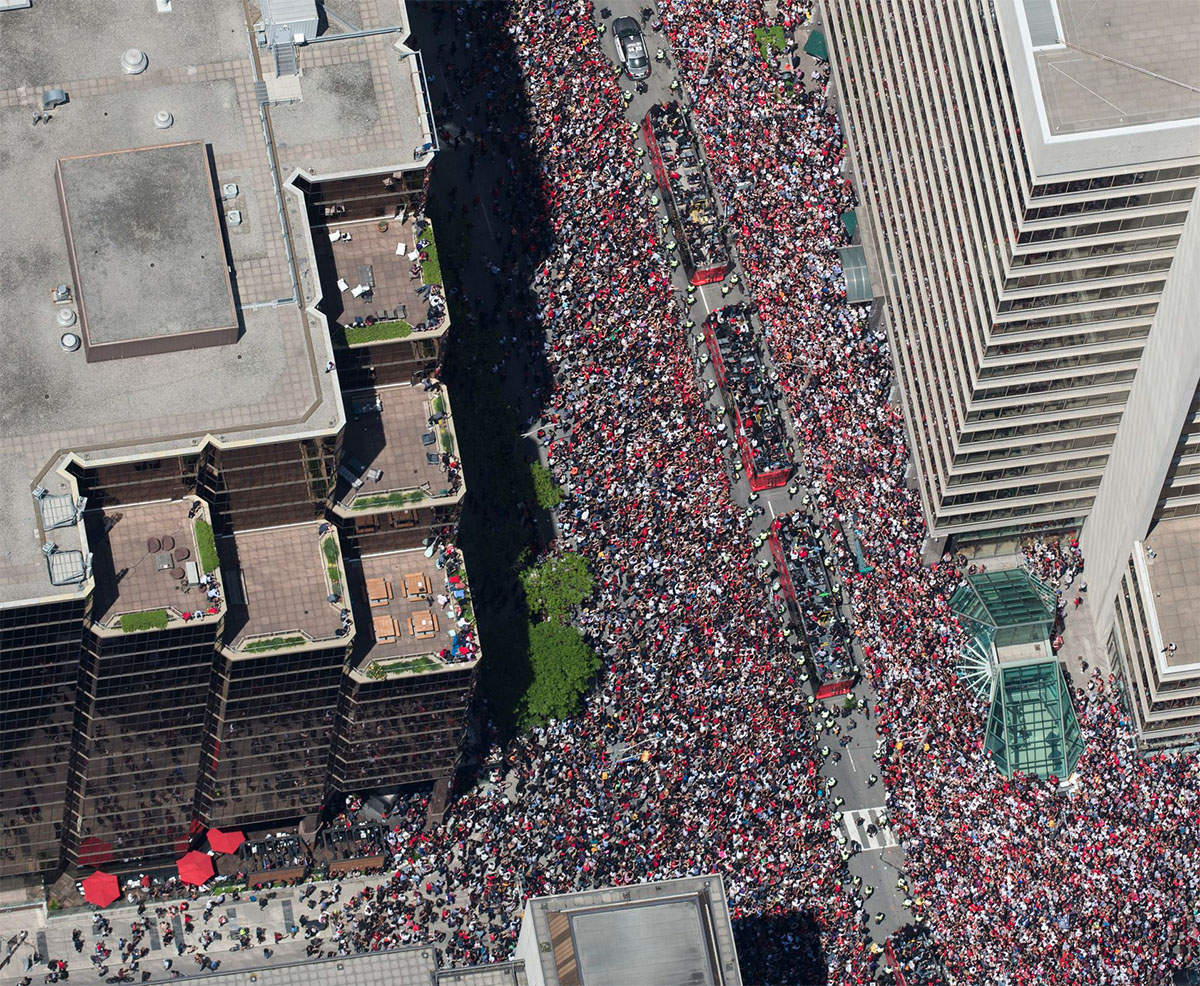
The crowd building up at University Avenue. Image © Fred Lum (The Globe And Mail).
The Championships played a significant role in 'unifying' the city of Toronto. People from different walks of life, ethnicities, religions and nationalities, joined together on the streets to cheer for ‘their’ team. We value games not so much because we know the sport so well, but more so for the thrill that the game brings and for the laurels we can call ours. Sport provides indirect social benefits by creating a congenial social climate that encourages collaboration and inclusion2.
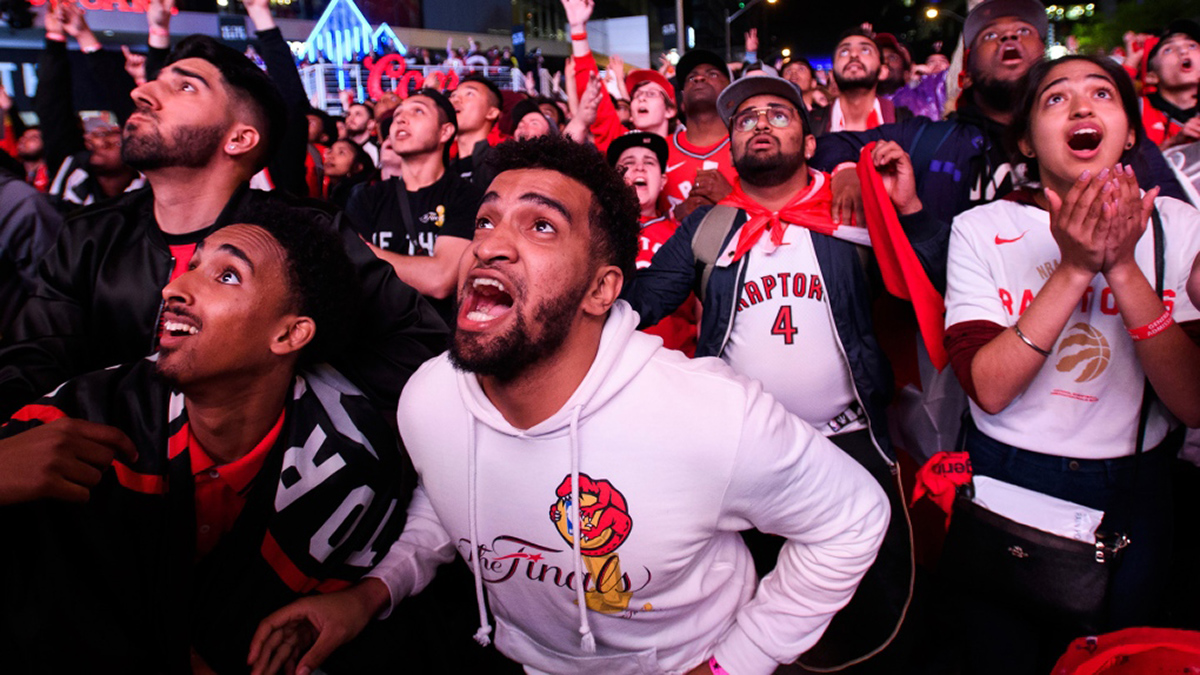
The nail-biting anguish felt during the last minutes of the finals game in Jurassic Park. Image © Nathan Denette (The Canadian Press).
The modern concept of 'sport cities' dates back thousands of years, from the theming of areas of cities, to 'sport zones'; and can be traced back to Olympia, where the first recorded Games were held3. A global phenomenon has been on the rise of ‘sports cities’. Cities were almost never planned as sports cities. In fact, sports cities are the outcome of local, regional and international sports activities that take place. They may consist of sports hubs within cities, or may be entire cities in themselves. Sports fields function as vents for anti-social or violent behaviour4.
Coalter and Gehl believe that sport has the potential to deliver social benefits5, and has a role, directly or indirectly, to play in the planning of modern global liveable cities6. How about we, as city advocates and ultimate users of the city, take into account the planning of cities based on sporting? What are the social benefits, and what better time than now to understand that sentiment, when the NBA final(s) is still fresh in our minds?
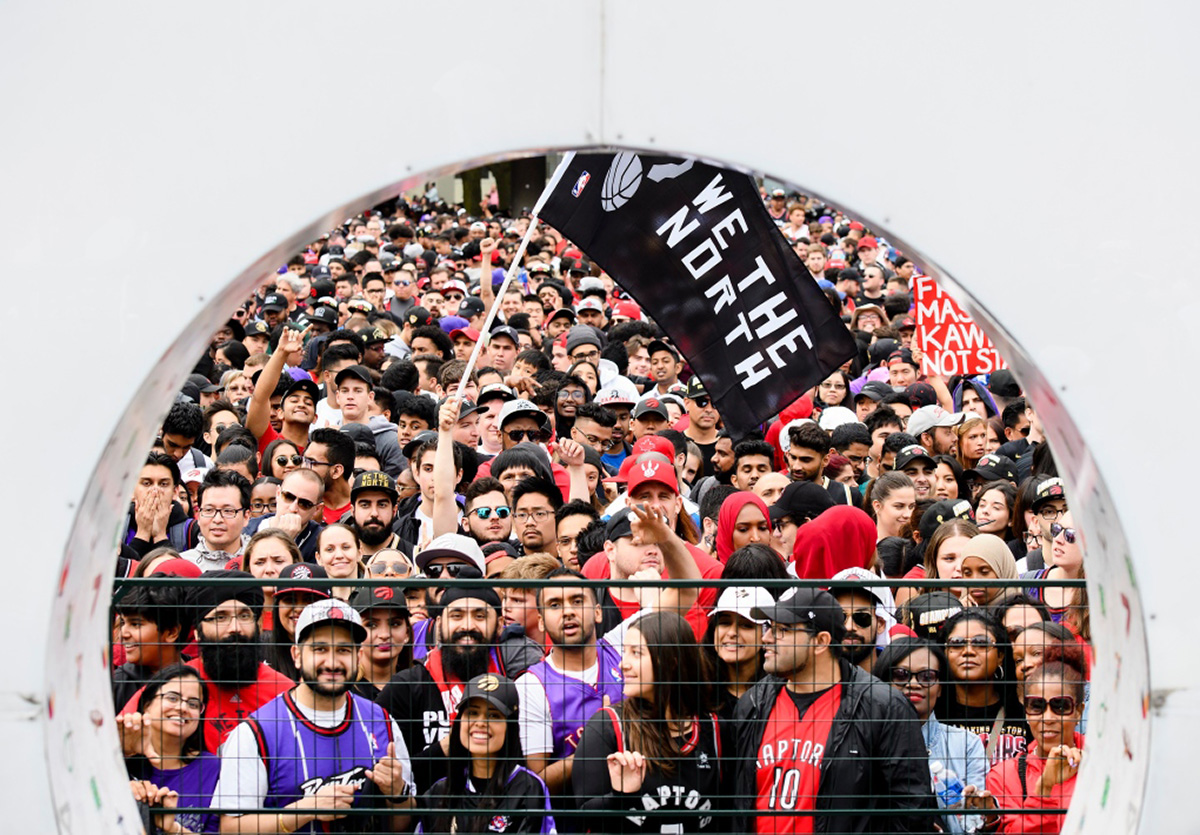
The celebrations kicking off in the heart of Downtown. Image © Nathan Denette (The Canadian Press).
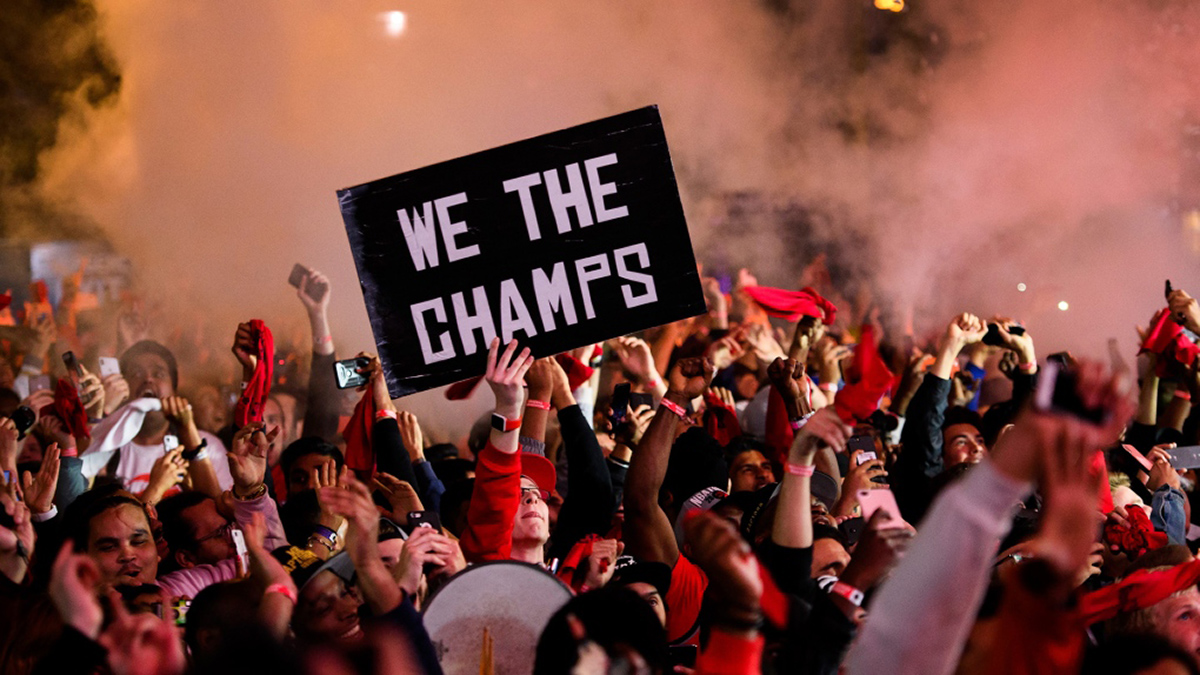
Fans celebrating the Raptors win in downtown Toronto. Image © Nathan Denette (The Canadian Press)
I believe here in Toronto, it was not so much the influence of the government that transformed T.O. into a sports city, but it was more the people that played a huge part. Toronto, the sports city that it became, was certainly not planned, it happened by chance. Such was the atmosphere that was created, where sport and liveability integrated so well together, breaking all the unnecessary barriers that exist in the world even today. Celebrated urban planners like Jane Jacobs and Jan Gehl fight for this cause to this day; they strongly urge for the city to become a 'place' where its inhabitants come together, and sport has the capacity to do that. In Toronto, everybody felt special, everybody felt welcomed, everybody felt included, and continues to feel so.
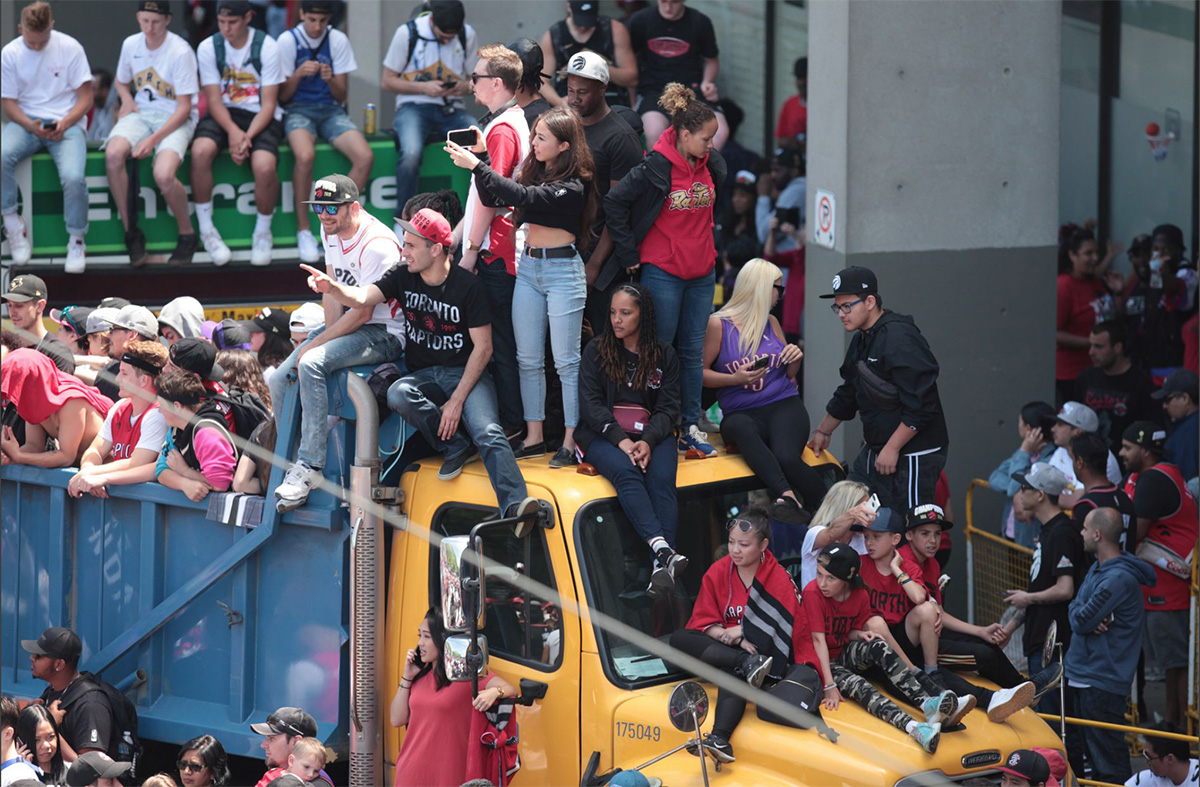
People gathered in front of City Hall waiting for Raptors Homecoming. Image © Hyungwon Kang (Reuters).
References:
1Middleton, Jackie. "8 Top North American Cities for Sports Fans." Reader's Digest Canada, https://www.readersdigest.ca/travel/world/top-8-north-american-cities-sports-fans/.
2Toohey, Kristine et al. "The social benefits in sport city planning: a conceptual framework."
3Smith, Andrew. "The Development of ‘Sports-City’ Zones and Their Potential Value as Tourism."
4Jacobs, Jane. "The Death and Life of Great American Cities."
5Coalter, Fred. “The social benefits of sport: An overview to inform the community planning process.”
6Gehl, Jan. "Life Between Buildings."
Top Cover Image: An aerial view of Nathan Phillips Square. Image © Fred Lum (The Globe And Mail).
